MyCatDNA by Genoscoper
|
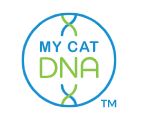 |
In this article, I will give you a tour in MyCatDNA, below you got a link for order tests and a short introduction.
This is a very complete test but it will take a while to get the answers, so make sure you do the test in time, I normally do it almost directly when I get the kitten home or decided who to stay.
Some example cats to have a look at:
Dagdrivarn HickoMissChampagne
Magyl Broder Tuck
Trollungen Million Dollar Baby
Order your tests here
How to test:
- Place your order.
- Wait and you will receive a test-kit, this can take a little while.
- When you get your test-kit and are ready to do the test on the cat, read the instructions well!
- Don't forget to first activate your test-kit and to write down the activation code on the paper.
- Do the test (some associations demand that you got the test verified by a veterinarian in this case you need to go to a veterinarian with your test-kit so that they can do the test and sign the papers). If you do not need this you can do it your self, just follow the instructions to avoid contamination.
- Put the code-stickers on each of the swabs to seal them and also one on the paper, put it all in the envelope.
- Send it to the lab.
- Wait and you will get an e-mail when the lab received your test.
- After a couple of weeks 3-6, you will receive an e-mail telling you that your results are ready.
- Logon to MyCatDNA and have a look at your results.
https://www.mycatdna.com/en/how-it-works/
What do you get:
When testing with MyCatDNA you will get a lot of answers about your cats DNA, like for example:
- More than 40 disorders (Focus will be on those relevant for your breed, but you will see results for all tests available).
- More than 20 traits: Like colors, blood-type, hair-type and a lot more.
- You will see the cat’s genetic diversity, individually and compared with you other cats and within the breed.
- You will have access to Breeder Tool where you can look for a potential partner and look for the healthiest option possible.
Summary
Disorders
Bloodtype
Traits
Genetic Diversity
Genetic Relationships
Breeder Tool
Summary
When you first get to one of your cats you will see a summary Three samples will be shown below with short descriptions but first some configurations you should do.
If you click on your cats name, you will get a Summary of the cat like below. The heart is the Breedertool and the cat inbetween 1 and 2 I will get back to later.
- Manage sharing, look at next picture for more detailed information about this one.
- Print out a report, you can get the results in a PDF, which you can print out or save on your computer, this is what you should send in to PawPeds for example if you like PK, SMA and HCM registered.
- Here you can type in some information of the cat, personally I write my webpage and a link to the pedigree since I think thats most useful if someone want to get in contact with me.
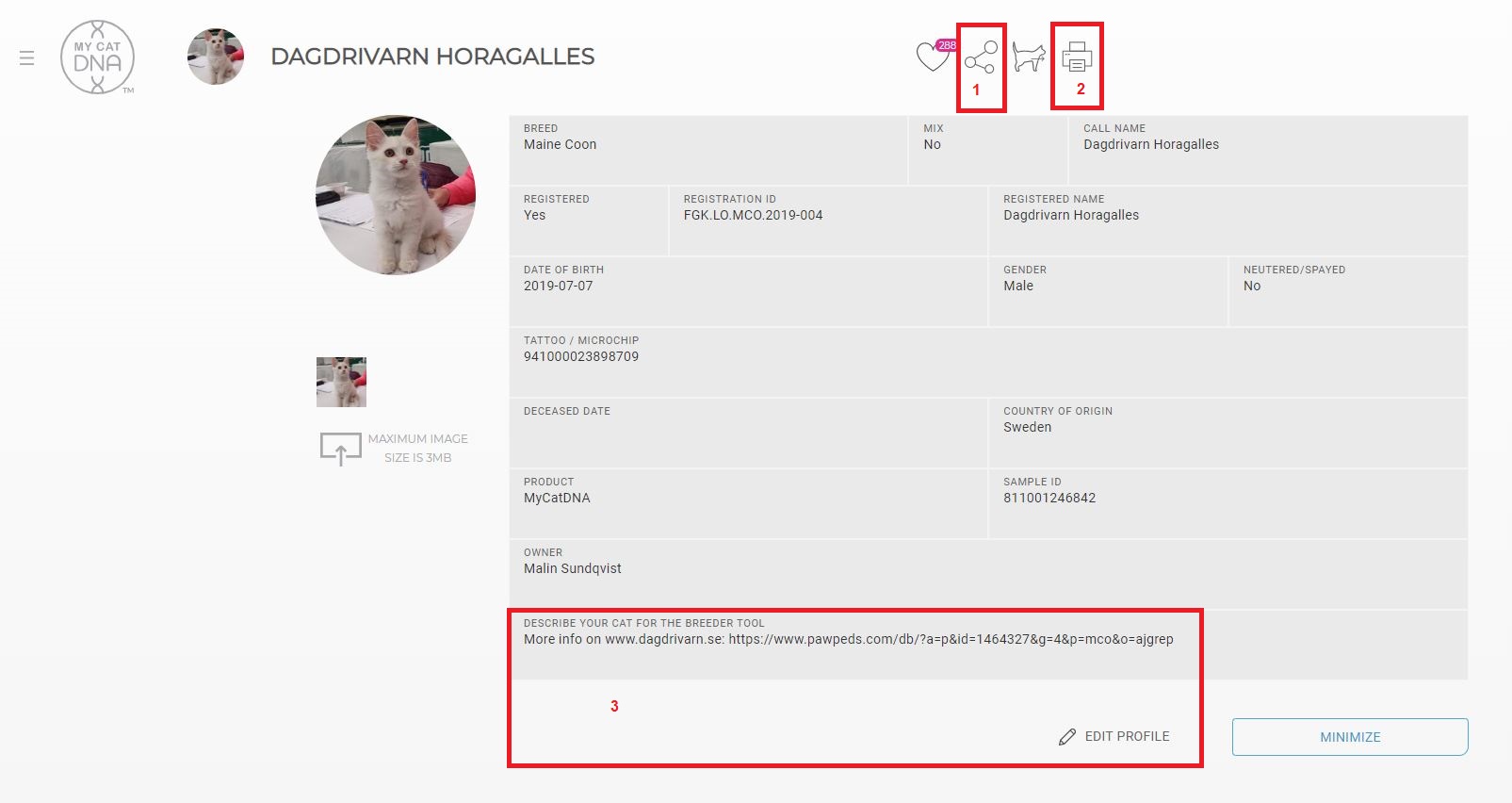
When you first get your results, your cat will not be public.
- Check this box to make your cats results public for all users to view.
- Below is some links to share the results first is by e-mail with a link, second is a link to add to your homepage, fb, or other places, the last one is a way to share directly on FB I actually never tried that one I always use the middle option.
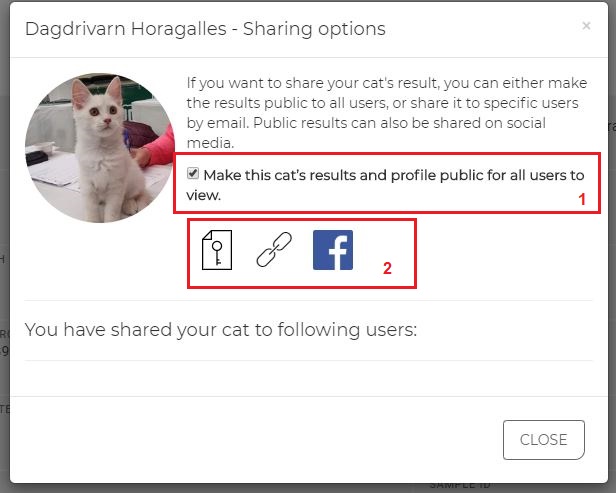
This is what it looks like when you first get into your cat, if the cat is free from any genetic risk.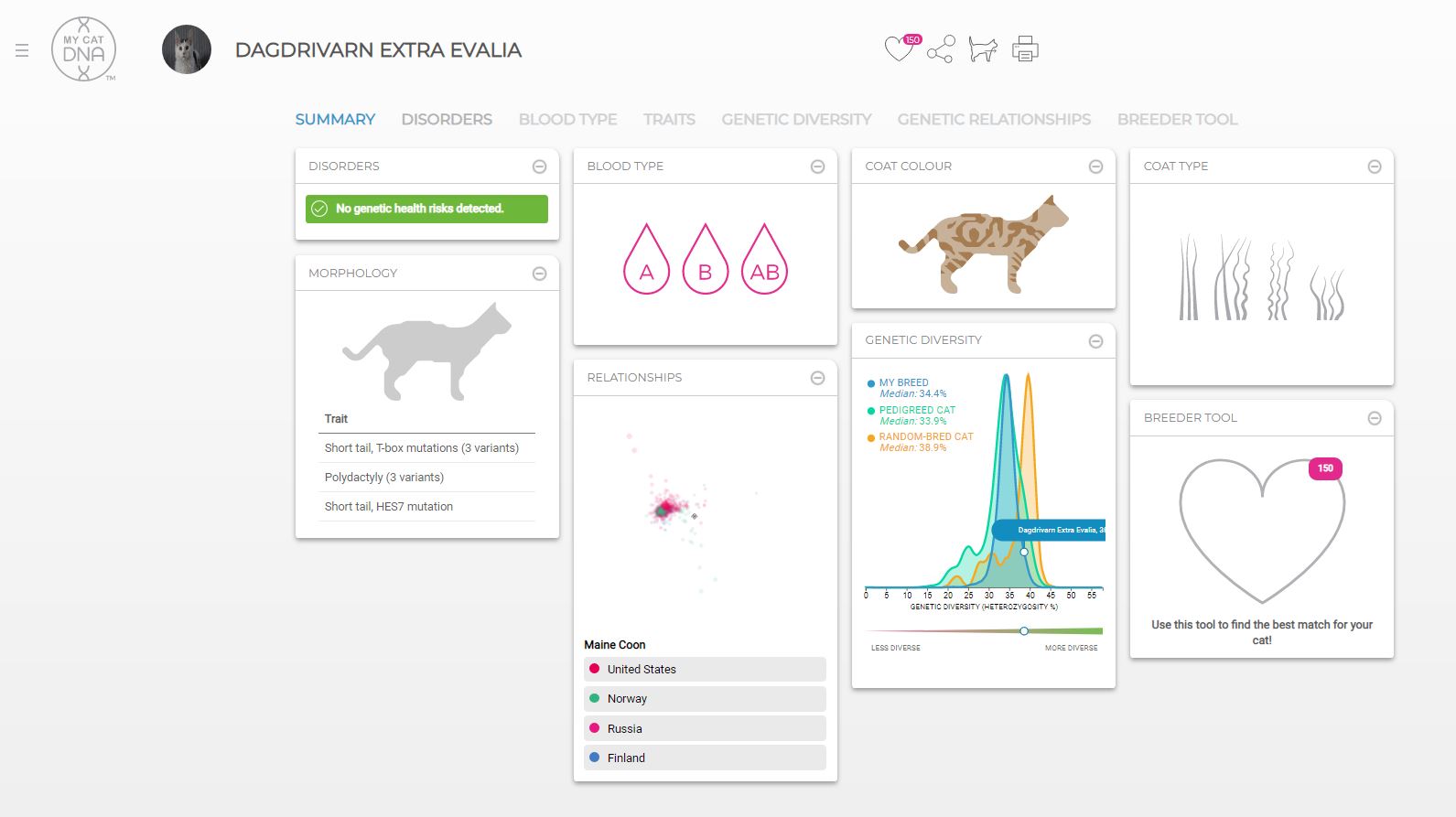
If there is a genetic risk detected you will see that in the first summary, you can also go in under Disorders to see more about the risk, but it also says directly which risk was detected, like in this picture below. This male carries one copy of the gene for PK and are not in the risk of being affected, he might carry on the gene to his offsprings who will not be sick eighter as long as he is not mated to a female who is also a carrier and the offspring will get two copies.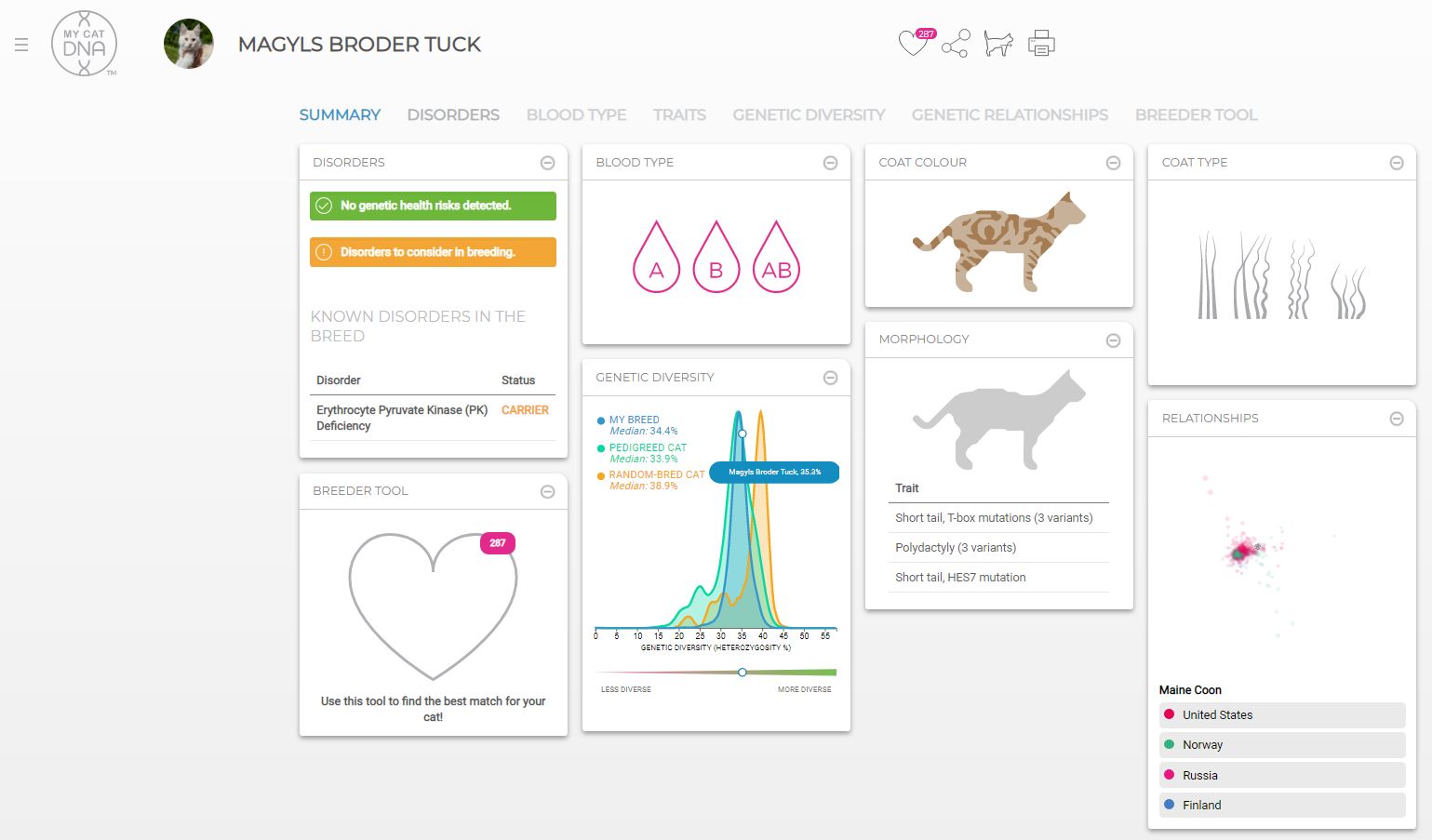
If there is a trait detected that means the cat is at risk for a disease you will see this on the first page for your cat in the disorder square.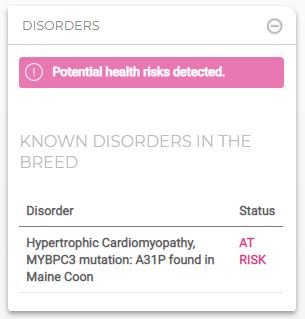
Disorders
When you get to one of your cat's pages and click on disorders you will see a list but also a square at the very top telling you if there are any risks detected.
You will see the disorders relevant for you breed at the top, and then new discovered disorders that potentially will be a risk within your breed and then at the bottom a green square with a plus-sign to the right, if you click there you can see all disorders relevant for other breeds and the result for your cat, there should be no surprises here, but it's good that we do get them, you never know.
As you can see below this cat are not at risk for any of the tested known disorders and at the very bottom the green square for disorders relevant for other breeds.
Green is no risk detected
Orange means the cat is a carrier
Red means the cat is affected or at risk of being affected
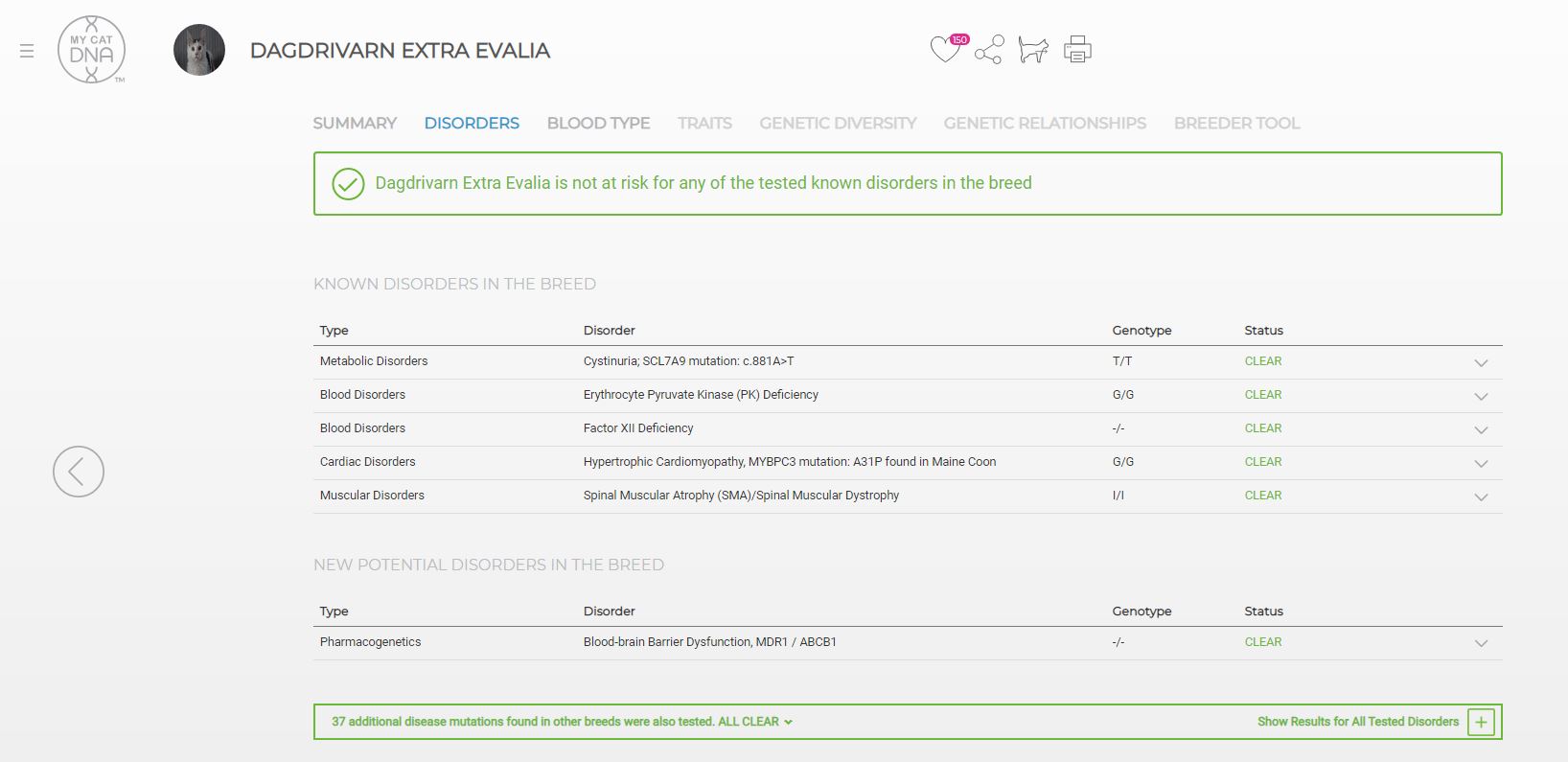
Here you got a cat that is a carrier, this cat is a carrier of PK, he will not be affected but he might carry on this gene to his kittens so it's important to not mate this cat to another carrier.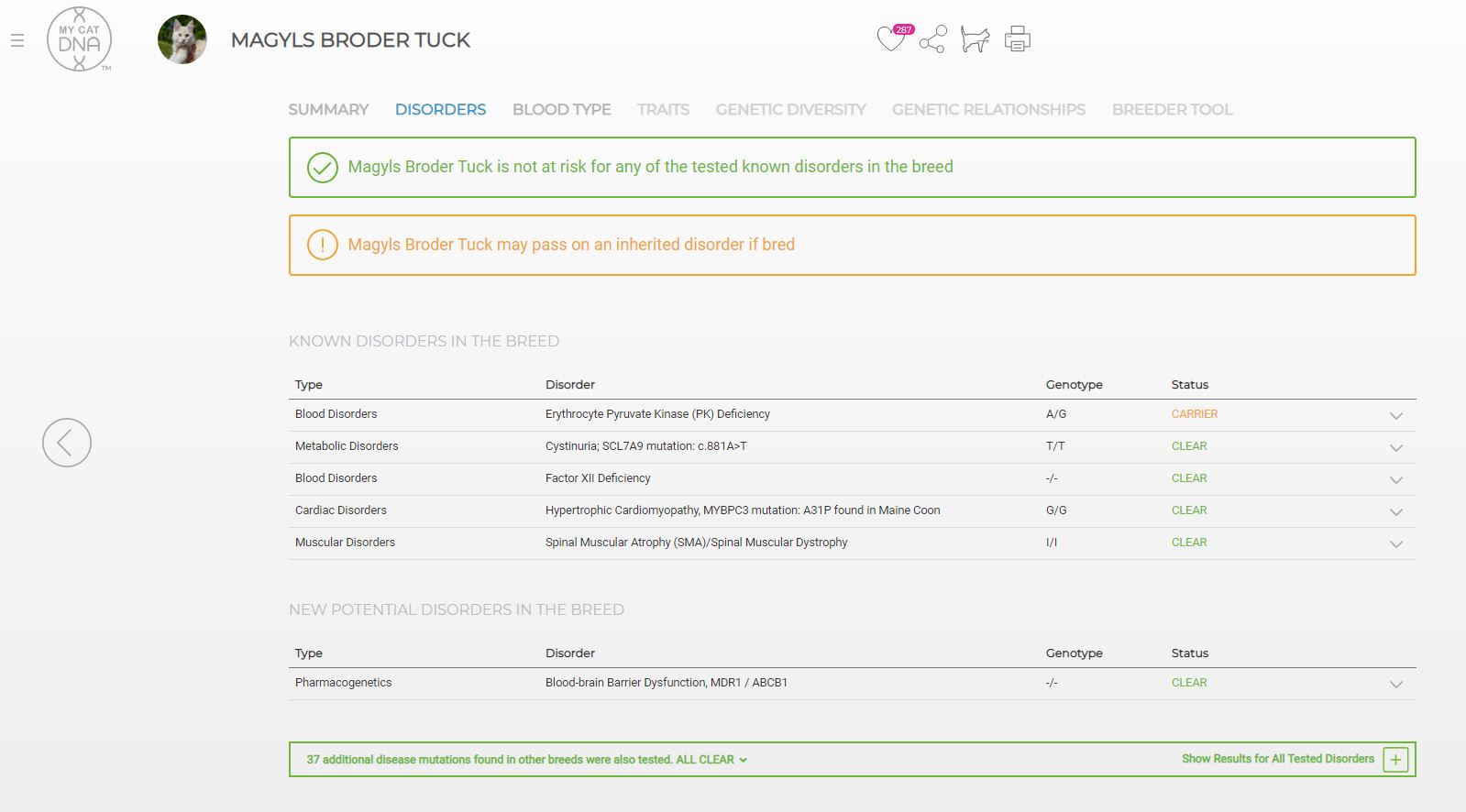
In this picture you can see a cat that is at risk for a disease, this is how it looks in that case.

When you are in the disorder section and you see the list of disorders, you can click on the row, when you see an arrow down to the right and a bit more info will fold out, you will also see a link to a PDF-document containing more info about the disease.
When you fold out a disease you will also get some more information about the severity, how it's inherited and some percentage regarding carriers.
Blood Type
This cat is A-type and is not carrying any b-type.

This is a cat carrying b-type, this cat might carry on the b-type to the kittens but there will never be any trouble.

Here is a cat who is blood type B, if it's a female, the kittens need to be prevented for nursing from their mother the first 16 hours after the birth to avoid problems.

As for the disorder you got an arrow down at the right sight of the line with the Blood Type, you can fold out this line so read more about the blood type.
Here you can get information about the frequency within the breed and within all cats.

| Statistics of the Maine Coon Breed | |
| N/N - A Type | 79,30% |
| N/b - B Carrier | 20,10% |
| b/b - B Type | 0,60% |
| From cats entered in MyCatDNA (At day for article = 333 tested cats) 2020-04-09 |
|
Traits
There are still some traits that cannot yet be tested for at any lab, even though research is ongoing for many of them.
Some of the traits which we cannot test for are:
Silver
Different patterns, like Classic Tabby, Mackerel, Spotted, Ticked and Wideband (golden/shaded/shell)
There is ongoing research for many of these so maybe we will get a test in the future.
The tests we can get answers to is:
Color Locus B: Chocolate and Cinnamon
Color Locus C: Pointed Coloration and Albinism
Color Locus A: Agouti and Charcoal
White Gloves of Birman Cats
Color Locus E: Russet
Color Locus E: Amber
Color Locus D: Dilution (Blue and Creme)
Color Dominant White and White Spotting (KIT-Gene)
Coat color
Lets continue to the Coat Color section, when you first get there you will see a list of all traits and also same arrows to the right as on other pages.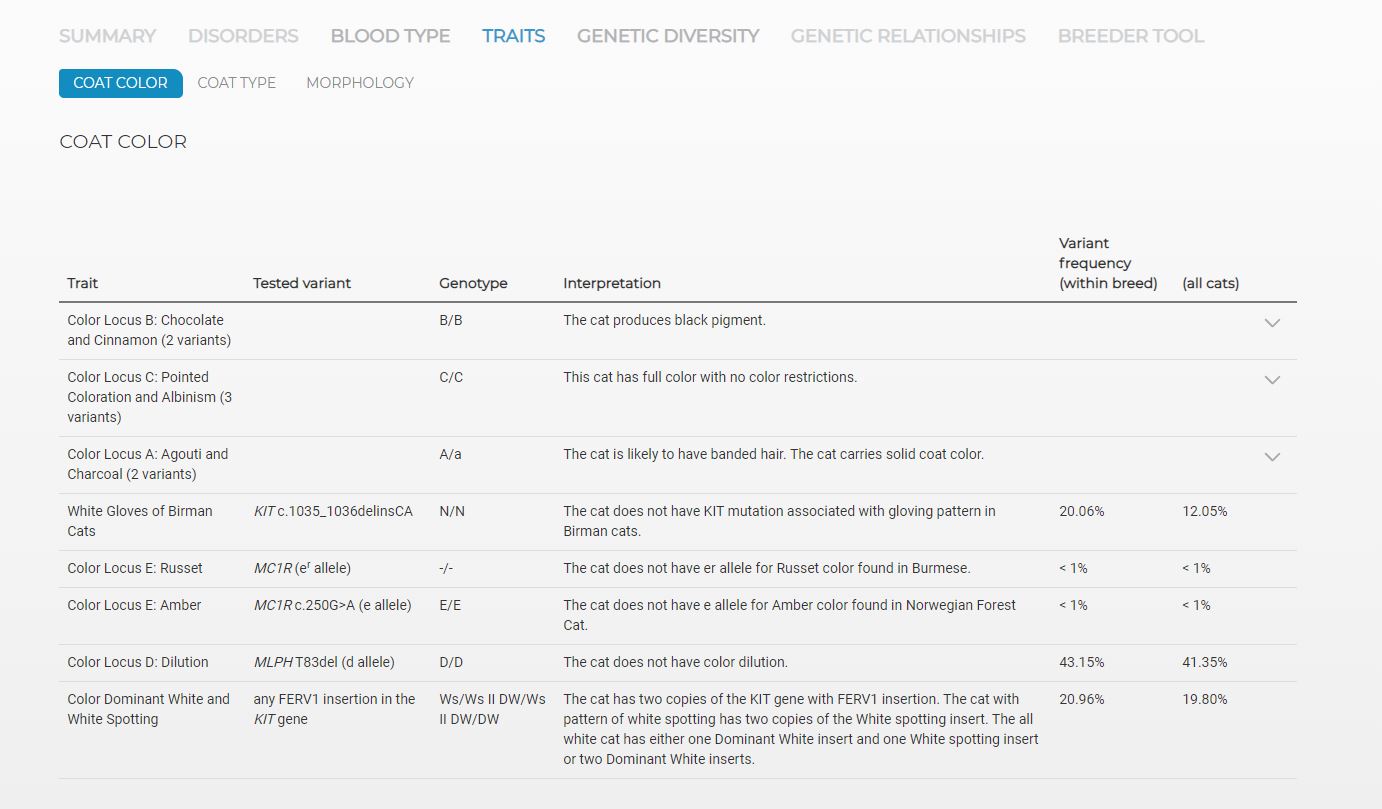
Coat Type
As you can se below there are three coat types but but also four different longhair types.
In our Maine Coon we mainly see M3 or M4 sometimes one of each and so on.
- Long Hair
- M4
- M3
- M2
- M1
- Curly Coat in Selkirk Rex
- Curly Coat in Cornish and German Rex cats
In the Maine Coon the statistics between the different longhair types in the breed. The (N) you can see does not mean the cat is shorthair, but there seem to be types of longhair still not covered by the test.
| M4/M4 | 35,20% |
| M3/M4 | 41,80% |
| M3/M3 | 18,40% |
| N/M4 | 2,10% |
| N/M3 | 2,50% |
| From cats entered in MyCatDNA (At day for article = 333 tested cats) 2020-04-09 |
|
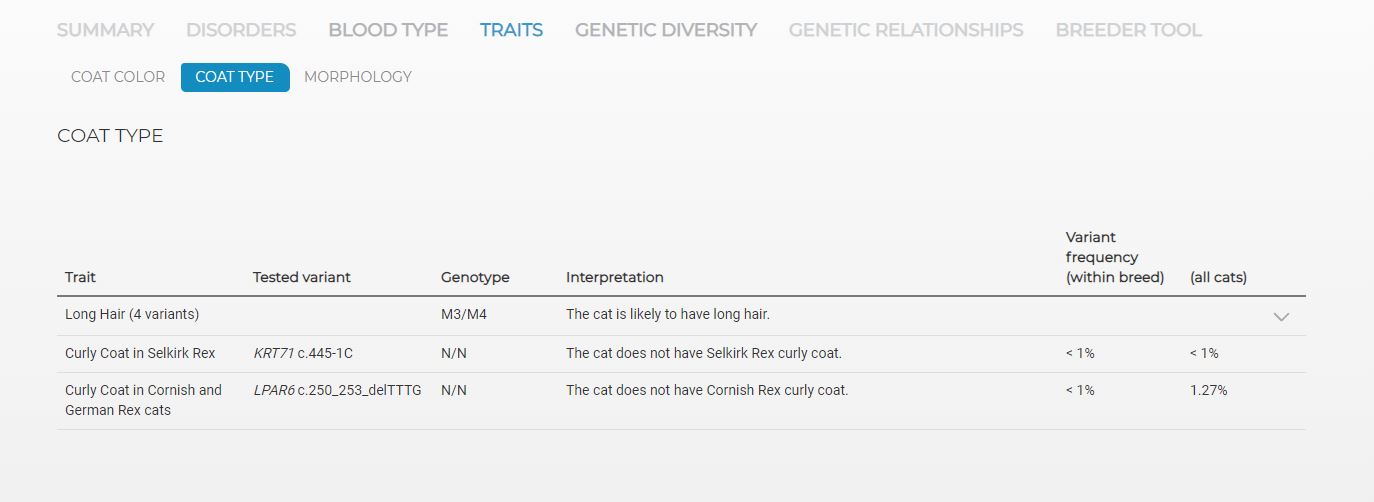
Morphology
There are today three mutations that are tested you will se them below.
- Short tail, T-box mutations
- Polydactyly
- Short tail, HES7 mutation
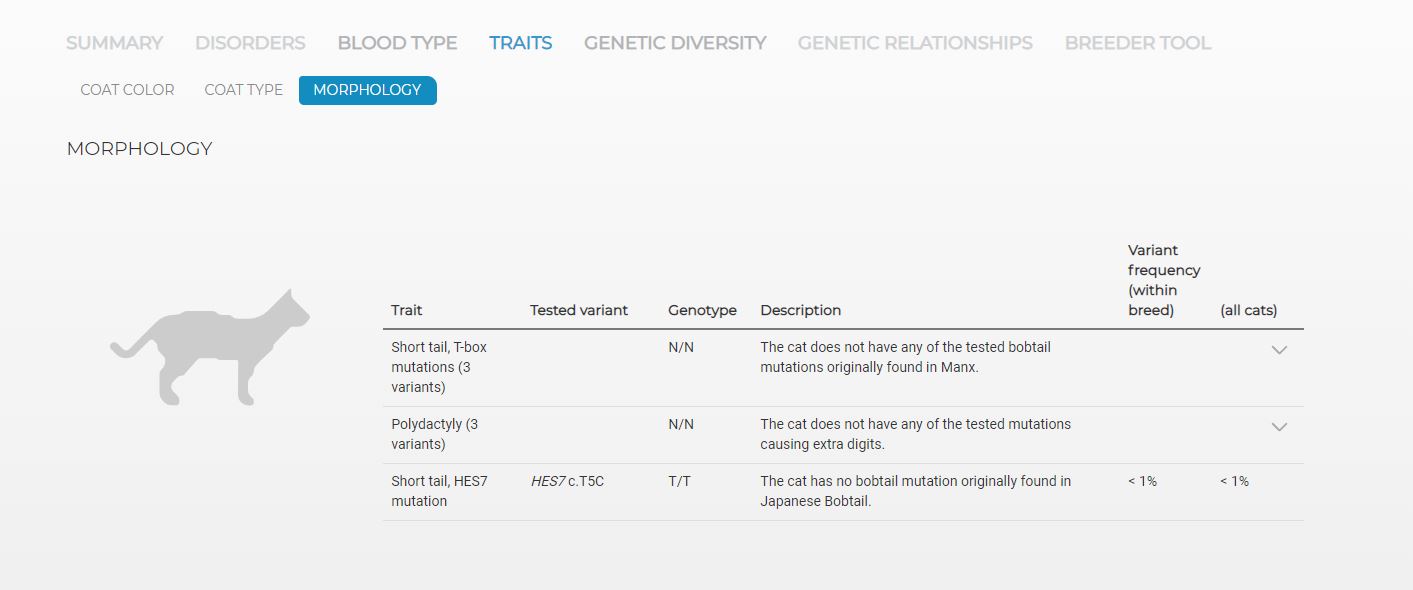
Genetic Diversity
In the tab Genetic Diversity you can see where your cat are when it comes to genetic diversity within the breed and you could also check the box "My other cats within breed" to compare your own cats.
Though this is depending on all other cats tested with MyCatDNA so every cat will change the outcome of all other cats. This also means that if the majority of the cats is from the same lines and one cat from completely different line, this cat will get a much higher genetic diveristy then the other cats so it does not really show the truth within the breed yet. It probably will if or when enough cats within the breed been tested and added.
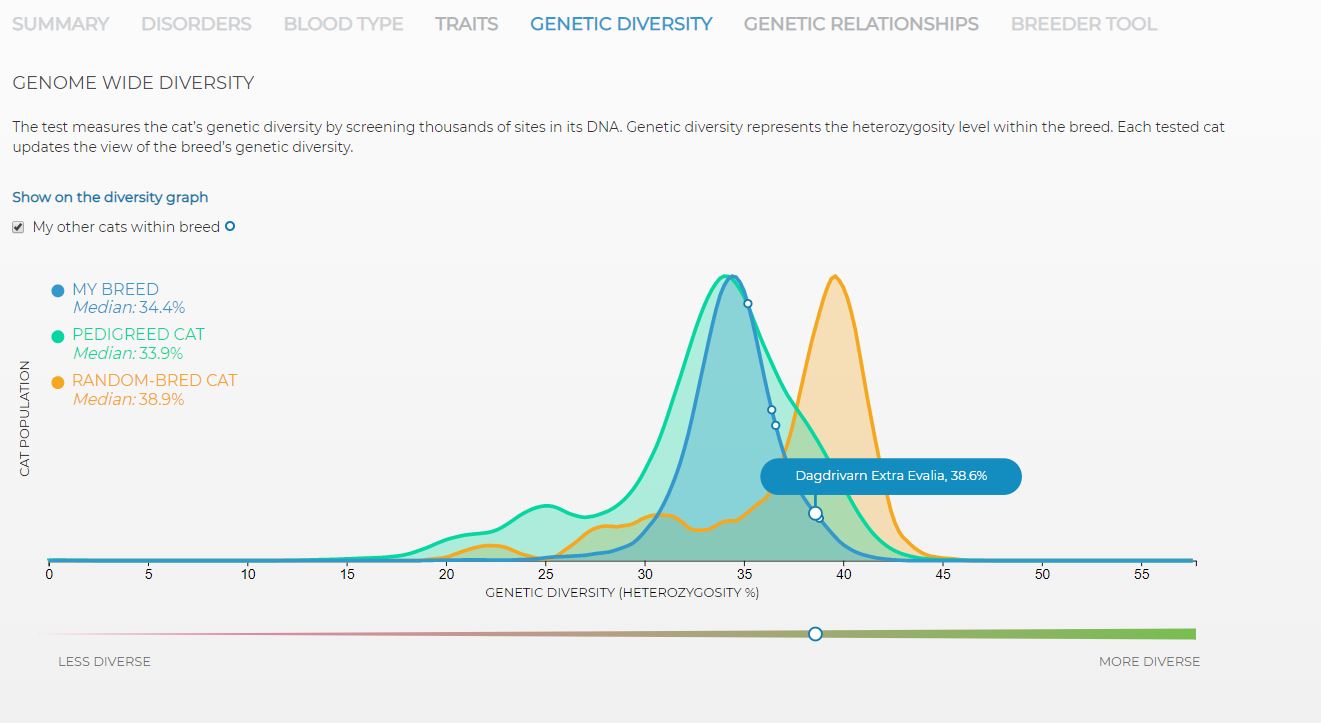
Genetic Relationships
Every tested cat shows as a dot in this graph, you can see you own cat as a blue circle.
This graph shows how closely related the different breeds in the selected group seem to be, cats with similar genomes cluster together, distance from other cats that differ in genetic makeup, if you hold the mouse and drag it over you can see names of the different cats in the cluster. And if you click you will get to the page of the cat you see.
This will also be something that developes over time as more cats will be added.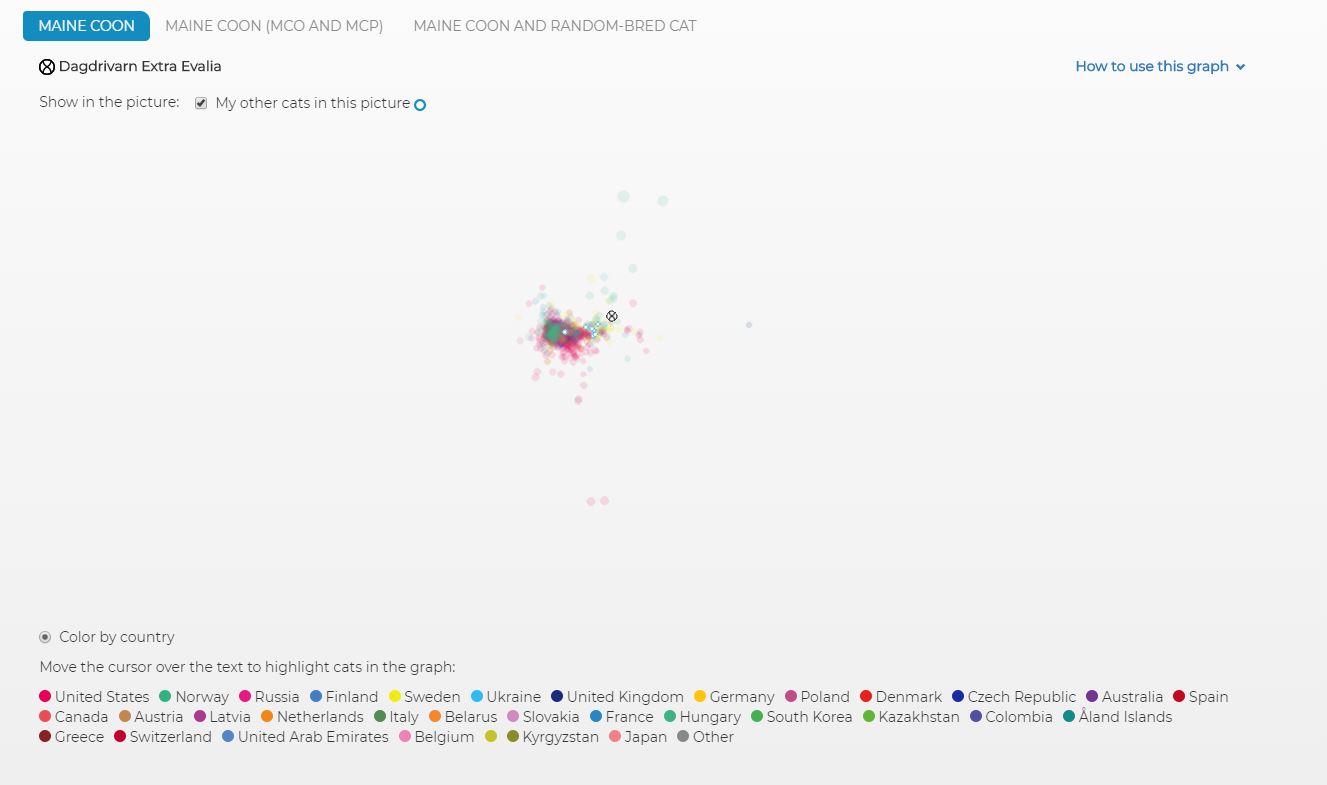
Breeder Tool
While the breeder tool is really interesting there is a need for breeders to remember to update their cats when they become neutered for this to be really valuable, and to add descriptions and possibly link to their homepages.
If not there will be really hard to contact the owner if a really good match are discovered. This can be a really good tool for all breeders. Below is a screenshot for one of my cats.
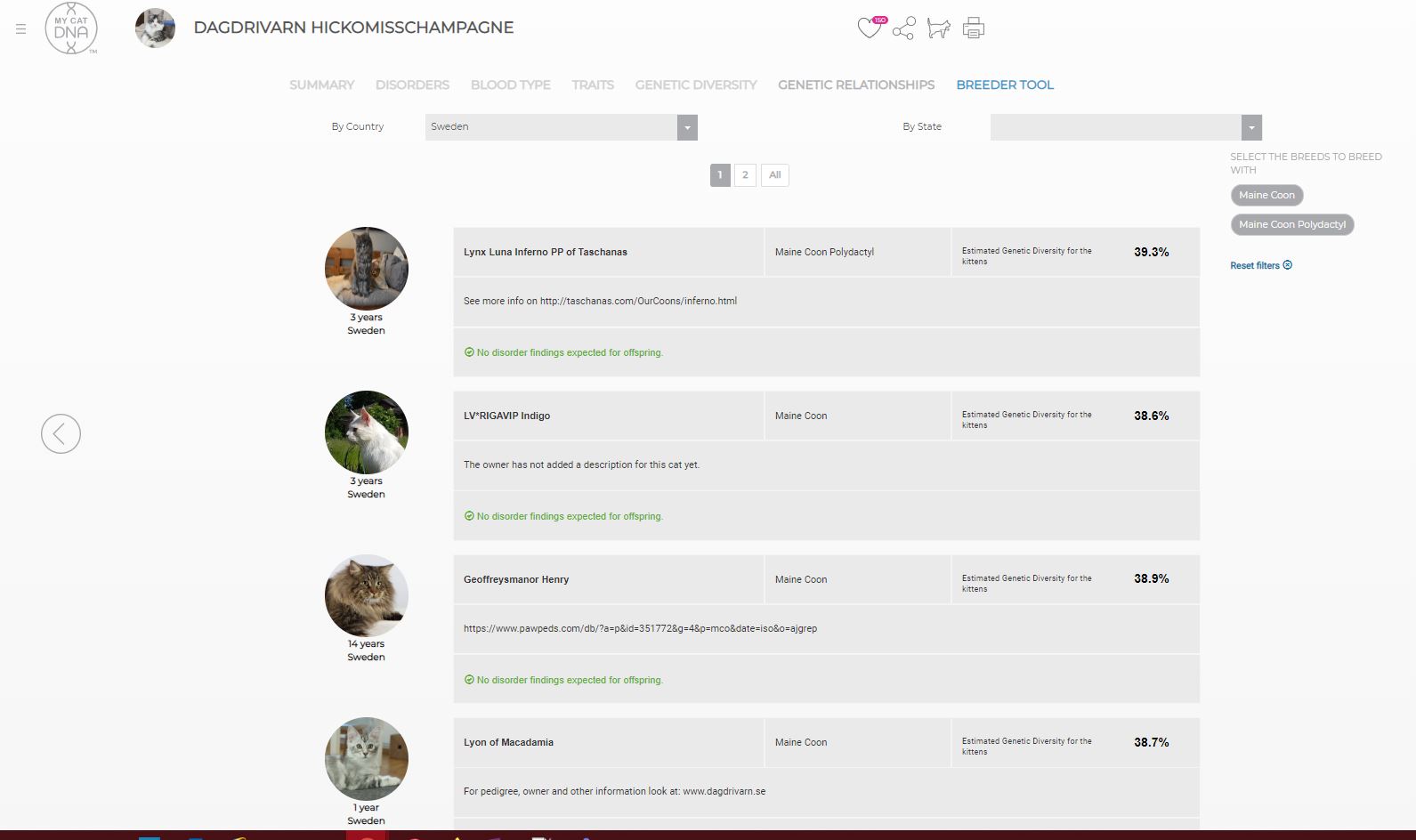
At last I want to get back to the beginning, you remember the cat at the top, the one between sharing and print out pdf.

This one is useful if you for some reason want to move the cat, maybe you do the test on a kitten who will later on move to another breeder. Then you can easily move the result to that breeder.
Just klick on the cat and fill in the mail-adress to the person who you want to move the cat to, click submit and it's done.
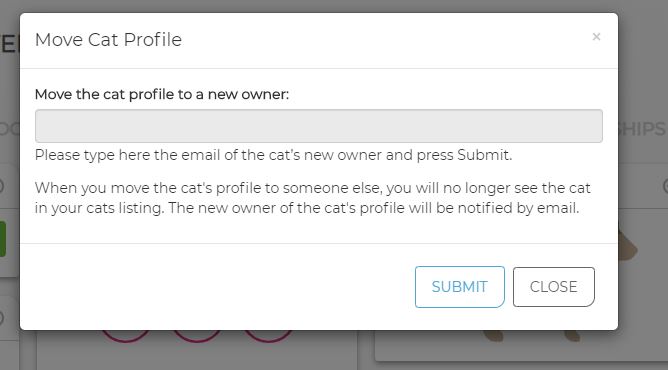
I hope you enjoyed this article, there is a lot more to cover but I think at least i managed to cover the basics.
By: Malin Sundqvist










